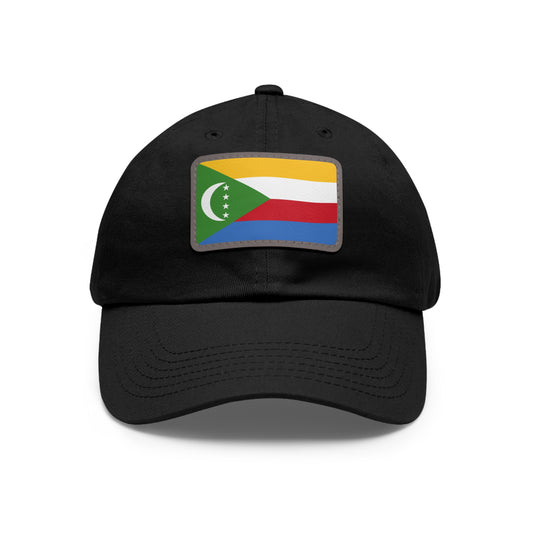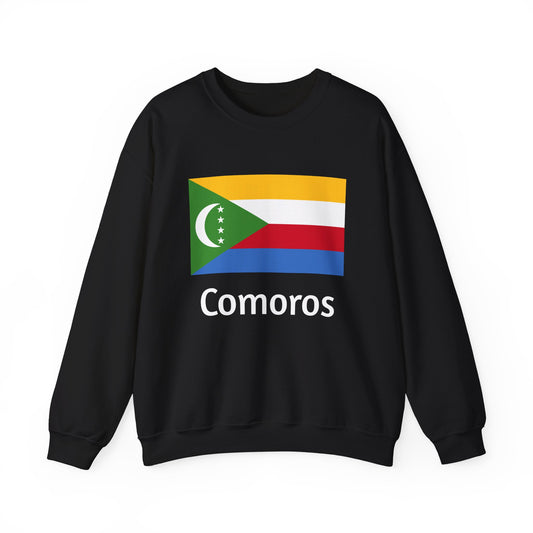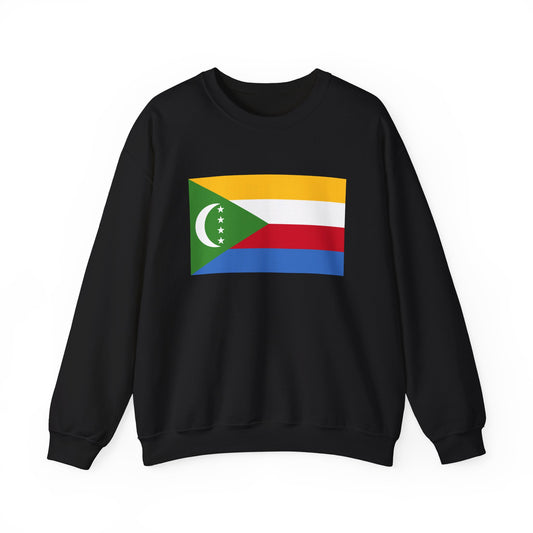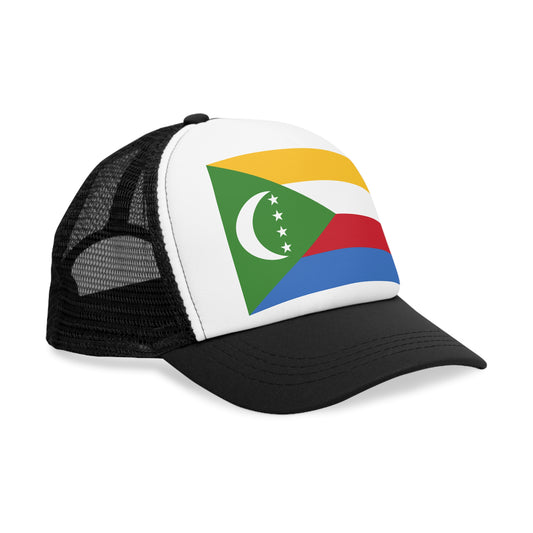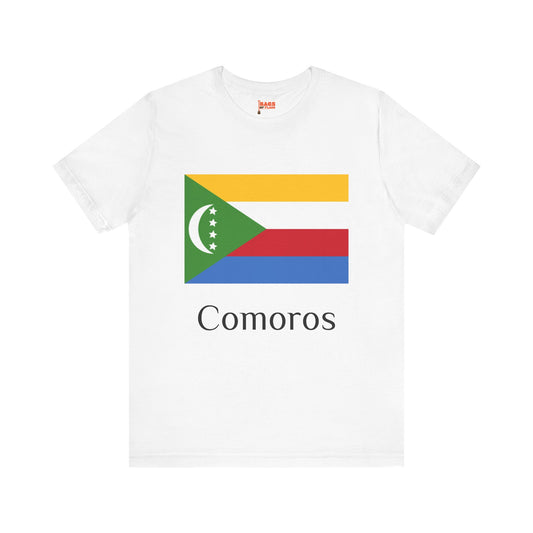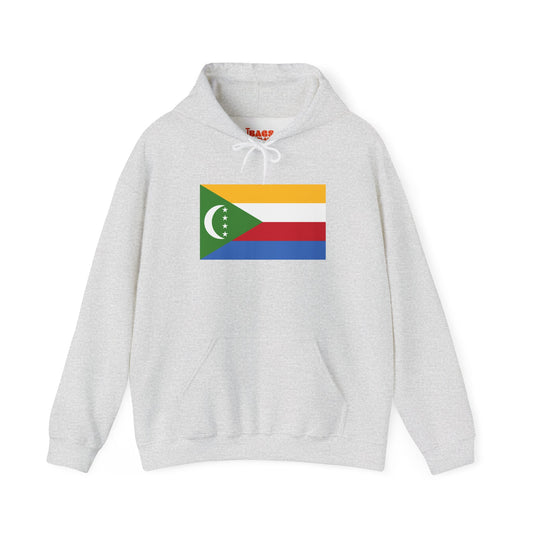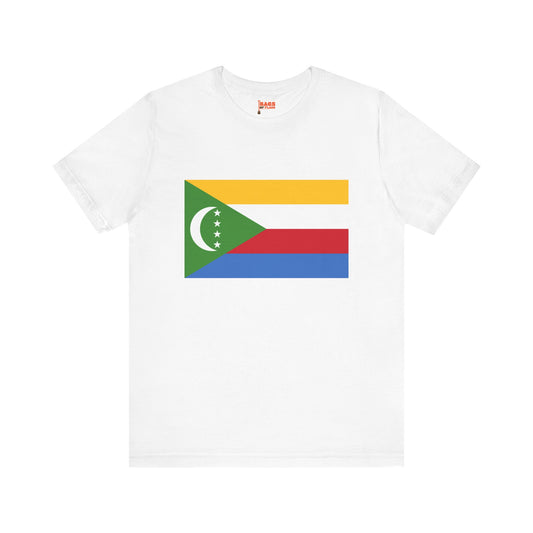-
Comoros Pillow
Regular price $22.65 USDRegular priceUnit price / per -
Comoros Backpack
Regular price $59.79 USDRegular priceUnit price / per -
Comoros Leather Patch Hat
Regular price $18.85 USDRegular priceUnit price / per -
Comoros Sweatshirt
Regular price $34.15 USDRegular priceUnit price / per -
Comoros Flag Sweatshirt
Regular price $34.15 USDRegular priceUnit price / per -
Comoros Mug
Regular price $11.65 USDRegular priceUnit price / per -
Comoros Trucker Cap
Regular price $14.90 USDRegular priceUnit price / per -
Comoros Hoodies
Regular price $34.40 USDRegular priceUnit price / per -
Comoros T-shirts
Regular price $22.79 USDRegular priceUnit price / per -
Comoros Flag Hoodies
Regular price $34.40 USDRegular priceUnit price / per -
Comoros Flag on T-shirt
Regular price $22.79 USDRegular priceUnit price / per
Collection: Comoros
The Comoros flag, also known as the flag of Comoros, is a symbol of the country's identity and history. With its unique design and colors, the flag represents the Comorian people's rich heritage and cultural significance. We will explore the various aspects of the Comoros flag, including its overview, historical context, symbolism, current relevance, and additional facts.
Overview of the Comoros Flag

The national flag of Comoros showcases a distinctive and colorful design, embodying the essence of the nation's landscape, beliefs, and aspirations. It is characterized by four horizontal stripes of varying colors—yellow at the top, white, red, and blue at the bottom. A green isosceles triangle extending toward the flag's center anchors the design on the hoist side. This layout adds visual appeal and embeds deep symbolic meanings within each color and the overall structure.
The arrangement and selection of colors are carefully chosen to reflect the nation's values, natural beauty, and journey toward unity and sovereignty. The green triangle on the left further enriches the flag’s symbolism, incorporating the country's religious heritage and the verdant landscapes that define Comoros. With its harmonious blend of colors and geometry, this flag stands as a visual testament to the nation's identity and its enduring spirit.
Historical Context of the Comoros Flag
The Comoros flag as we know it today was adopted on January 7, 2002, signifying a new chapter in the nation's history. This adoption culminated in the country's quest for a flag that thoroughly represented its ideals, aspirations, and the unity of its people. The journey to the current flag design reflects Comoros' turbulent history, characterized by a struggle for independence, political upheaval, and the quest for national identity. Over the years, the flag has undergone several modifications.
Each iteration reflected the changing political landscape and the evolving identity of the Comorian nation. The decision to settle on the current design resulted from extensive national dialogue aimed at forging a symbol that would stand the test of time and embody the collective spirit of Comoros. The adoption process highlighted the country's commitment to democracy and consensus, serving as a testament to the resilience and determination of its people to chart their history course.
Symbolism Behind the Comoros Flag
The elements of the Comoros flag are rich in symbolism, each carrying a specific message that reflects the nation's values, aspirations, and history. The four horizontal stripes represent the four islands of the archipelago: Mohéli (yellow), Mayotte (white), Anjouan (red), and Grande Comore (blue). This color scheme serves as a geographical representation and embeds deeper meanings tied to the nation's collective identity and aspirations. The yellow stripe signifies the sunlight that bathes the islands, symbolizing hope and a bright future. White stands for peace and purity, a reminder of the importance of harmony among the islands' inhabitants.
Red is a powerful symbol of the struggle for independence, a tribute to the sacrifices made by the Comorian people in their quest for sovereignty. The blue stripe mirrors the surrounding Indian Ocean, a constant in the lives of Comorians, signifying their connection to and reliance upon the sea. The green triangle is a nod to the country's predominant Islamic faith, embodying hope, prosperity, and the lush, verdant landscapes that characterize the Comoros. Together, these elements weave a narrative of unity, trust, and resilience, encapsulating the essence of Comorian identity and the collective journey of its people.
Current Relevance of the Comoros Flag
Today, the flag of Comoros holds a place of prominence in the hearts and minds of its citizens, symbolizing unity and national pride. It can be seen flying high during significant national holidays, such as Independence Day, and it adorns public buildings, educational institutions, and the homes of many Comorians. The flag is also central to military ceremonies, representing the honor and dedication of the Comorian armed forces.
Despite the occasional debates over its design and the meanings ascribed to its elements, the flag remains a pivotal symbol of Comorian sovereignty and identity. Its role in public life extends beyond mere representation; it fosters a sense of belonging among the islands' diverse communities, bridging cultural and regional differences. During international sports competitions, the Comoros flag is proudly displayed by athletes, serving as a beacon of national pride on a global stage. In these contexts, the flag is not just a fabric but a living symbol of the country's past struggles, present achievements, and future aspirations. Its relevance today is as strong as ever, encapsulating the spirit of the Comorian people and their enduring commitment to unity and progress.
Additional Facts About the Comoros Flag
The Comoros flag adheres to guidelines that ensure its respectful display and handling, reflecting the nation's deep reverence for this symbol. These guidelines stipulate that the flag must always be displayed dignifiedly, never allowing it to fall or lay on the ground, as this would be considered a sign of disrespect. Additionally, there is a ceremonial protocol for raising the flag at dawn and lowering it at dusk, symbolizing the nation's vigilance and resilience from daybreak to nightfall. An intriguing aspect of the Comoros flag is its unique distinction of not featuring common global symbols such as stars or crosses, making it stand out among the world's flags.
This absence underscores the flag's representation of Comoros' unique identity, eschewing widespread symbols to focus on elements that specifically symbolize the nation's heritage, landscape, and aspirations. Another noteworthy detail is the careful consideration given to the flag's orientation; displaying it upside right is crucial, as inverting it could unintentionally convey distress or disrespect. These nuances of flag etiquette and design intricately contribute to the flag's significance, encapsulating the pride and unity of the Comorian people.






